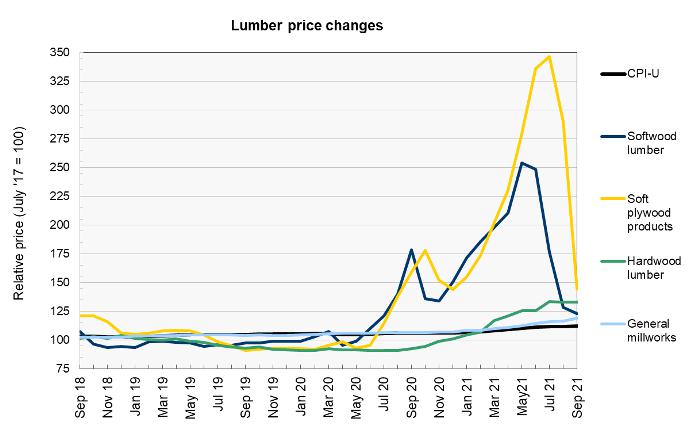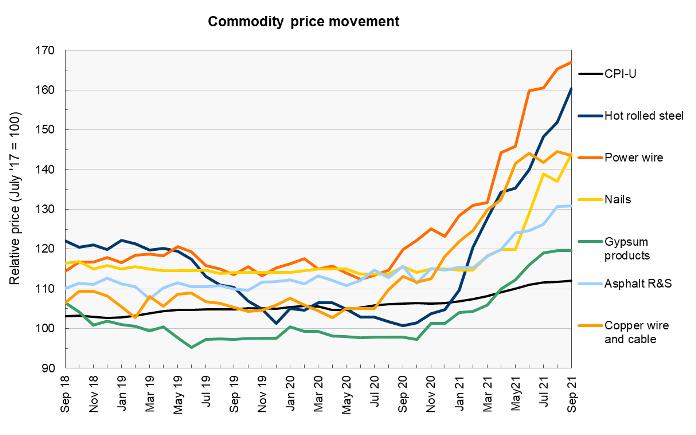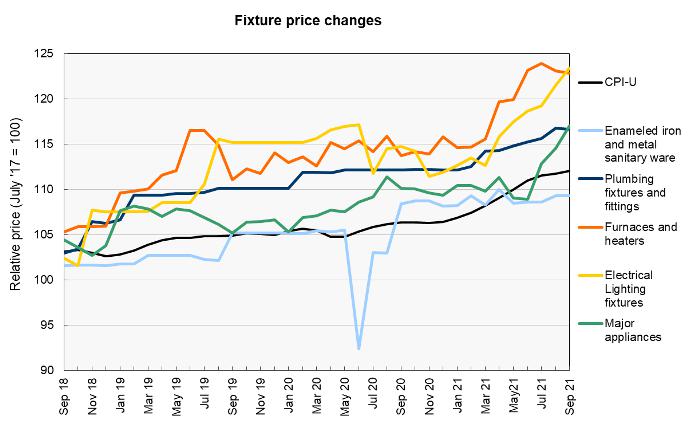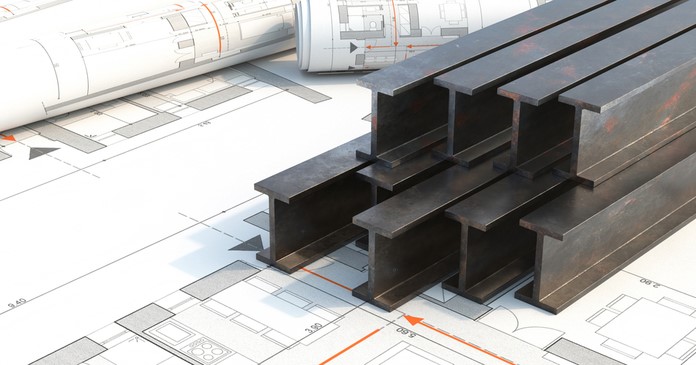The Bureau of Labor Statistics (BLS) released its producer price index (PPI) report for September 2021. It showed that construction components and materials prices were down 0.2 percent in the month, seasonally adjusted. However, the construction components and materials price index was 16.6 percent higher than its year-earlier level.
Overall prices for processed goods for intermediate demand rose by 1.3 percent in the month. The index was 23.9 percent higher than its year-ago level.
For reference, the changes in these indices compare with a 5.4 percent rise in the all-items consumer price index (CPI-U) for the 12 months ending in September. The CPI-U was up 0.4 percent for the month.
The shelter portion of the CPI-U was up 0.4 percent in September. It was up 3.2 percent over the prior 12 months.
Yield Pro (PRO) compiled the BLS reported changes for our standard list of construction materials prices. These are materials whose prices directly impact the cost of constructing an apartment building. The two middle columns of the table provide the percent change in the price of the commodity from a year earlier (12 Mo PC Change) and the percent change in price from August 2021 (1 Mo PC Change). If no price data is available for a given commodity, the change is listed as N/A.
The pre-COVID column lists the changes in the current construction materials prices relative to the average prices in the first three months of 2020, before the pandemic impacted the economy. This may give a truer idea of the magnitude of the recent price increases for commodities, such as lumber, whose prices were already rising sharply last summer, than does the 12 Mo PC Change column.
| Commodity | 12 Mo PC Change | 1 Mo PC Change | Pre-covid Change |
| Softwood lumber | -31.4 | -4.3 | 19.1 |
| Hardwood lumber | 43.5 | 0.1 | 45.3 |
| General millworks | 11.7 | 1.9 | 13.2 |
| Soft plywood products | -17.5 | -50.2 | 54.8 |
| Hot rolled steel bars, plates and structural shapes | 59.4 | 5.6 | 52.3 |
| Copper wire and cable | 28.3 | -0.7 | 35.4 |
| Power wire and cable | 39.0 | 1.0 | 43.6 |
| Builder’s hardware | 11.1 | -0.7 | 10.8 |
| Plumbing fixtures and fittings | 4.0 | -0.1 | 4.8 |
| Enameled iron and metal sanitary ware | 1.0 | 0.0 | 3.9 |
| Furnaces and heaters | 7.0 | -0.2 | 8.6 |
| Sheet metal products | 30.7 | 4.0 | 30.1 |
| Electrical Lighting fixtures | 6.9 | 1.5 | 7.0 |
| Nails | 24.6 | 5.1 | 25.7 |
| Major appliances | 5.3 | 2.2 | 10.0 |
| Flat glass | 10.5 | -1.8 | 10.5 |
| Ready mix concrete | 3.8 | -0.5 | 5.0 |
| Asphalt roofing and siding | 13.1 | 0.1 | 16.6 |
| Gypsum products | 23.0 | 0.0 | 19.9 |
| Mineral wool insulation | 24.5 | 2.1 | 22.1 |
The first chart, below, shows the history for lumber prices over the past 25 months. Note that the prices used by the BLS in compiling the indexes are collected on the Tuesday of the week containing the 13th day of the month. In September 2021 that was September 14.

The price of softwood lumber was reported to be down in September, but it was still up significantly from the level seen before the pandemic. In addition, although the wholesale market lumber price was relatively subdued when the September price reading was taken, it closed at $471 on September 14, it has risen since then. The price closed at $731 on October 12, the date for the BLS’s October price reading. Therefore, we should anticipate a jump in lumber prices in next month’s PPI report.
Lumber prices in the futures markets have risen along with the spot price. The January 2022 contract was trading around at $790 as of mid-October, up $180 over the last month. The March 2022 contract was trading near $800.
The price of soft plywood products fell this month according to the BLS. However, the price of soft plywood products is up significantly from its level before the pandemic. Its price rise since early 2020 is still the highest of any of the construction materials we track.
The next chart, below, shows the recent history of several other construction materials prices. Prices were up for most of the products with high metal content, with steel structural shapes leading the way. Other steel products like nails and sheet metal products also saw price increases of 4 percent or higher in September. However, this may be due to earlier rises in steel prices working their way through the supply system. Markets indicate that there may be some relief coming.

MarketWatch reports that the NYSE American steel price index has generally been trending downward since closing at $1,920 on August 11. It closed on September 14 at $1,689 and closed on October 12 at $1,581. Steel futures indicate that steel prices will decline only gradually over the next 12 months. The January 2022 contract was priced at $1,494 recently, down $186 since we last reported on it.
The price of copper has been volatile lately, trading between $4.09 and $4.52 per pound within the last two weeks. While up sharply from its trading range of around $2.65 per pound in late 2019, the price of copper is down slightly from the peak it reached in May.
The price of aluminum continued its rise over the past month. It closed at $3,064 on October 12 up $224 from its level in our last report.
The prices of the other commodities tracked in this chart have been rising since late last year. All of their prices are up at least 16 percent from their levels before the pandemic.
Price changes for several of the more finished goods from our sample are illustrated in the final chart, below. These construction materials represent the majority of those from our table whose annual price rises are still in single digits. However, prices for major appliances and for electrical lighting fixtures have been moving up sharply recently.

The full BLS report can be found here.













